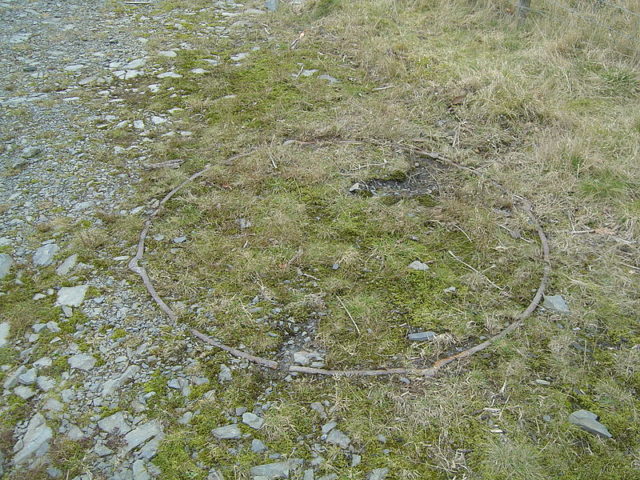Close to the village of Abergynolwyn in Wales is the location of the abandoned slate quarry known as Bryn Eglwys. The beginnings of this quarry can be found during the 1840s.
In 1864 it was leased by the English industrialist and cotton mill owner William McConnel who was looking for an alternative revenue stream after the dramatic drop off in supplies of raw cotton caused by the American Civil War. He formed the Aberdovey Slate Company Limited and made plans to increase the productivity of Bryn Eglwys quarry.

But one thing was causing headaches for Mr McConnel – the transportation of the finished product. The slate had to be carried by packhorse from the quarry, at almost 700 feet above sea level, 7.5 miles down the valley to the docks of Aberdyfi.
Struggling with this for awhile, he decided that the best thing to do was to build a railway that he named Talyllyn Railway. It was a narrow-gauge railway that started from Nant Gwernol and went all the way to Tywyn.

From Nant Gwernol station, a series of cable operated inclines and horse-worked tramways climbed an elevation of 430 feet to reach the quarry. These were the Alltwyllt incline, Galltymoelfre tramway, the Cantrybedd incline, Beudynewydd incline and one final stretch of horse-drawn tramway. You can imagine that it was still not an easy task to bring slate down from the quarry, but much larger quantities could now be moved.

But despite the investments in both the quarry and the railway, they both failed to rise to a certain marketable success. After 15 years in the business of slate quarrying the company was in serious debt and on October 9, 1879 it was placed for auction.

Even the auction was a failure. With no other choice left, McConnel himself bought the quarry and the railway. And then things started to change. The slate market was in its best years which meant that the quarry was finally making some profit. When Mr McConnel died in 1902, his son W.H. McConnel became the sole proprietor of the quarry and railway.

But with time the debts of the quarry grew, which forced W.H. McConnel to close down the production of Bryn Eglwys in 1909. Two years later, Henry Haydn Jones, a member of the Welsh Liberal Party, bought the quarry and the railway.

He even bought Abergynolwyn village. All three now became part of the Abergynolwyn Slate & Slab Co. Ltd. Once the paper work was done, the quarry was reactivated.

A total of three slate veins run underneath this area of mid-Wales. The point where these veins cross is where the quarry Bryn Eglwys is located.
The biggest of the them all is the “Broad Vein”. Measuring 600 feet wide, this vein is found in the north side of the site. It is filled with shale and patchy layers of a hard, durable of slate.

Further to the south lies what is known as the “Middle Vein.” No wider than 60 feet, this vein produced a shale of lower quality which breaks apart easily and is filled with fossils. It was never worked by Bryn Eglwys.
The third vein, known as “Narrow Vein,” is actually as big as the Middle Vein but is rich in high quality slate, occasionally sprinkled with quartz.

And so, under a guidance of Henry Haydn Jones, the quarry continued operating until December 20, 1946. A major collapse at quarry was what initially led to its closure.
The quarry was abandoned for some years and all of the equipment was scraped. The structures found on site were demolished for they posed threat of collapsing themselves.

Anyone who dares to venture to this place nowadays is forewarned and fairly advised not to do so. Since the collapse, the land is not stable anymore and there are regular rock slides.

Plus the quarry is part of private property. But despite what happened with the quarry, the railway form Tywyn to Nant Gwernol managed to survive. Today the Talyllyn Railway is a heritage railway which runs steam trains through the beautiful Welsh countryside as a tourist attraction, including one if the original locomotives named Talyllyn.
